Why the cow is worshipped in Hindutva politics
The cow has been traditionally embedded in the Indian psyche — to be pulled out every now and then by those exercising or aspiring to be in power, with appeals to the special position it holds.
The agitation, backed by the BJP’s forebear, the Bharatiya Jana Sangh, failed to bend the government of Indira Gandhi to its will — in several ways, however, it marked the beginning of the era of politics of the holy cow in post-Independence India.On November 7, 1966, a swarm of around 1,25,000 men marched towards Parliament in an attempt to storm the building. The protest, led by a group of Naga Sadhus brandishing spears and trishuls, had a single demand: a countrywide ban on cow slaughter. The agitation, backed by the BJP’s forebear, the Bharatiya Jana Sangh, failed to bend the government of Indira Gandhi to its will — in several ways, however, it marked the beginning of the era of politics of the holy cow in post-Independence India.
It was not that the emergence of the cow as a prominent symbol of Hindutva politics was the product of the 1966 movement. The cow has been traditionally embedded in the Indian psyche — to be pulled out every now and then by those exercising or aspiring to be in power, with appeals to the special position it holds. Aspects of religion, economics, society, and culture were melded into each other to create a symbolism that best suited the political purpose at hand.
Early beginnings
Whether — and to what extent — the cow was venerated in ancient India has been debated for long. Historian D N Jha’s 2009 work, The Myth of the Holy Cow, angered many with the claim that in ancient India, the cow was sacrificed, and its flesh consumed. The Vedic God Agni was fond of the flesh of cows, and the animal was offered to the Maruts and Asvins, Jha wrote, basing his conclusions on studies of Vedic texts.
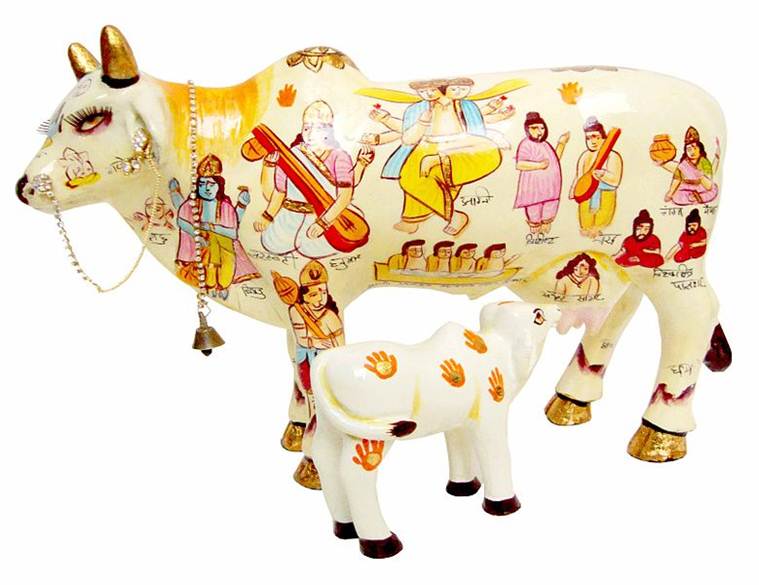 The instances of cow slaughter described by researchers including Jha do not necessarily deny that a certain respect and admiration for the cow did exist in the Vedic period, even though it may not have been considered “sacred and inviolable”. (Wikimedia Commons)The backlash — including death threats — that Jha received notwithstanding, most liberals have held up the suggestion that ancient Indian Hindus were comfortable with consuming beef to reject an equation of veneration for the cow with the “Hindu” or “Indian” way of life. The instances of cow slaughter described by researchers including Jha do not necessarily deny that a certain respect and admiration for the cow did exist in the Vedic period, even though it may not have been considered “sacred and inviolable”. The historian John McLane described the obvious link between the economic significance of the cow and its religious association: “In the Vedic period, Brahman priests were paid for their sacrifices with cows, goddesses were flattered by comparing them with cows, the cow and the bull became common Vedic symbols for maternity, fertility, and virility; and the products of the cow occupied a central place in Vedic sacrifices.” The Mahabharata and Ramayana note the benefits from cow products.
The instances of cow slaughter described by researchers including Jha do not necessarily deny that a certain respect and admiration for the cow did exist in the Vedic period, even though it may not have been considered “sacred and inviolable”. (Wikimedia Commons)The backlash — including death threats — that Jha received notwithstanding, most liberals have held up the suggestion that ancient Indian Hindus were comfortable with consuming beef to reject an equation of veneration for the cow with the “Hindu” or “Indian” way of life. The instances of cow slaughter described by researchers including Jha do not necessarily deny that a certain respect and admiration for the cow did exist in the Vedic period, even though it may not have been considered “sacred and inviolable”. The historian John McLane described the obvious link between the economic significance of the cow and its religious association: “In the Vedic period, Brahman priests were paid for their sacrifices with cows, goddesses were flattered by comparing them with cows, the cow and the bull became common Vedic symbols for maternity, fertility, and virility; and the products of the cow occupied a central place in Vedic sacrifices.” The Mahabharata and Ramayana note the benefits from cow products.
In the medieval period, the Hindu veneration for the cow contrasted with the outlook of Muslim rulers and subjects who looked upon it merely as food. It remained, however, more a marker of differentiation between the communities than of direct conflict, and several Mughal emperors put restrictions on cow slaughter in deference to the sentiments of the majority of their subjects. Babur asked Humayun to refrain from killing the cow because in “that way lies the conquest of the hearts of the people of Hindostan”. Akbar, the greatest and most tolerant of all the Muslim rulers of India, expressly prohibited the slaughter of cows.
Cow slaughter was discouraged by the Marathas, Sikhs, and Rajputs, and a ban was agreed upon by officials of the East India Company as part of some of their treaties with Indian rulers. So, after British annexed Punjab, Sir Henry Lawrence ordered a ban on the killing of cows in Amritsar in 1847, in an effort to placate the Sikhs. The last Mughal emperor Bahadur Shah Zafar banned cow slaughter and threatened to execute Muslims found guilty of sacrificing cows during Bakrid.
Late Nineteenth Century
In the 1870s, cow protection took on clear political and Brahmanical tones. The first organised cow protection movement was started by the Sikh Kuka sect in Punjab; soon afterward, the Arya Samaj, led by Swami Dayanand. Saraswati, became its strongest advocate.
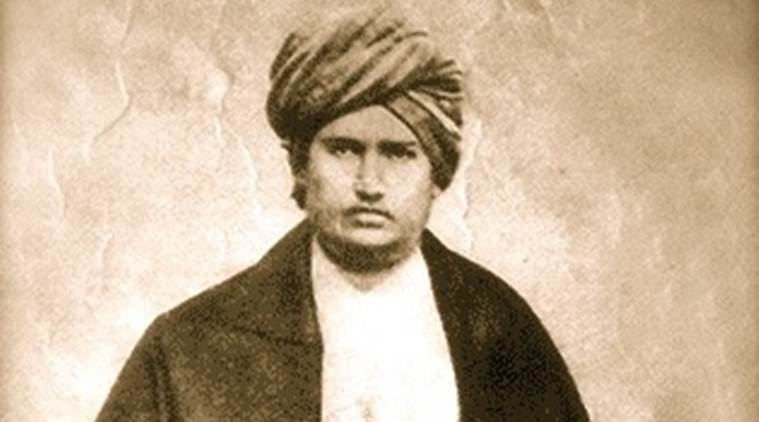 The first organised cow protection movement was started by the Sikh Kuka sect in Punjab; soon afterward, the Arya Samaj, led by Swami Dayanand. (Wikimedia Commons)The emergence of the organised cow protection movements in the late nineteenth century needs to be seen in conjunction with the revivalist movements of the time. The revivalist movements appeared in Hindu, Muslim and Sikh communities in response to social reform movements led by western educated Indians who questioned several cultural and religious traditions of the East for their absence of rationalism. “Hindus who had previously been unorganised now openly defended idol worship, caste, the sanctity of the Puranas and cows, and the legitimacy of customary marriage practices,” writes McLane. Among Muslims, the attempt at conserving traditional religious practices included a stress on cow slaughter as an important aspect of the faith itself. Acting in opposite ways, the cow became a symbol of a renewed conflict of identity between Hindus and Muslims.
The first organised cow protection movement was started by the Sikh Kuka sect in Punjab; soon afterward, the Arya Samaj, led by Swami Dayanand. (Wikimedia Commons)The emergence of the organised cow protection movements in the late nineteenth century needs to be seen in conjunction with the revivalist movements of the time. The revivalist movements appeared in Hindu, Muslim and Sikh communities in response to social reform movements led by western educated Indians who questioned several cultural and religious traditions of the East for their absence of rationalism. “Hindus who had previously been unorganised now openly defended idol worship, caste, the sanctity of the Puranas and cows, and the legitimacy of customary marriage practices,” writes McLane. Among Muslims, the attempt at conserving traditional religious practices included a stress on cow slaughter as an important aspect of the faith itself. Acting in opposite ways, the cow became a symbol of a renewed conflict of identity between Hindus and Muslims.
Dayanand Saraswati traveled to Calcutta, Benaras, Haridwar, Poona, and Bombay, among other places to preach the veneration of the cow. In February 1881, he published the pamphlet, Gaukarunanidhi or Ocean of Mercy, which condemned meat-eating and suggested laws for gaurakhshini sabhas.
And yet, this strong advocacy of cow protection at this time cannot be said to have stemmed primarily from an anti-Muslim sentiment. Several forces were at play: there were those for whom the economic worth of cattle, and the cow in particular, was an important factor; there were those who saw the cow as a powerful symbol around which Hindus of all castes and classes could be rallied to oppose the beef-eating British; and there were those who were essentially opposed to the social reformers who attacked orthodox Hinduism. It is important to note that some of the biggest cow protection riots took place around the time of the passage of the Age of Consent Act, which was seen as dealing a powerful blow to traditional Hindu marriage practices.
Through the 1880s and 90s, the network of Gaurakhshini Sabhas grew stronger and wider. Violent anti-cow slaughter riots rocked Azamgarh, Balia, and Ghazipur. While the Gaurakhshini Sabhas were disbanded after the storm of violence, more riots took place in Ayodhya in 1912 and 1913, and in Shahabad in 1917.
The nationalism project
The first cow protection agitations began in the late 1800s in the context of the revivalist movements of the time and went on to shape a significant strain of the nationalist struggle.
By the early twentieth century, as the nationalist movement gathered momentum in the country, the sanctity of the cow came to be firmly established in the consciousness of the masses. While the national movement of the Congress did not feature the cow as its prime symbol, the animal’s significance in gathering mass support was something that the party could not turn away from. However, the problem with rallying mass support on the basis of cow symbolism was problematic for the party as it would alienate the Muslims and shake the Congress’ motive of representing the interests of all Indians.
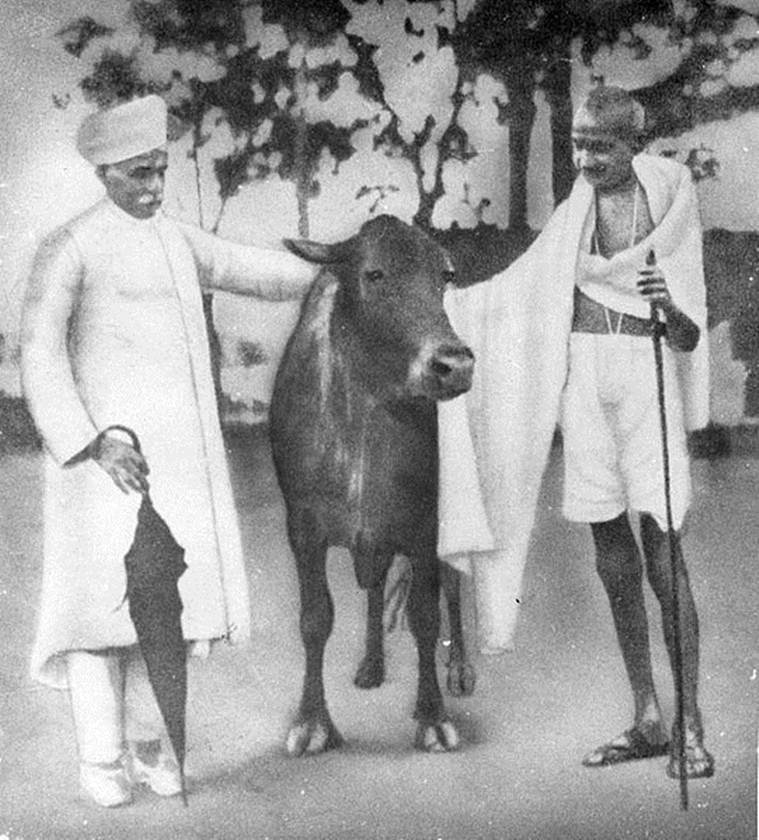 While the national movement of the Congress did not feature the cow as its prime symbol, the animal’s significance in gathering mass support was something that the party could not turn away from. (Wikimedia Commons)The position occupied by the cow symbolism in the Congress’ nationalist project is best understood from what the father of the nation, Mahatma Gandhi had to say about the animal. On October 6, 1921, Gandhi wrote the following about the importance of the cow in his weekly journal- Young India:
While the national movement of the Congress did not feature the cow as its prime symbol, the animal’s significance in gathering mass support was something that the party could not turn away from. (Wikimedia Commons)The position occupied by the cow symbolism in the Congress’ nationalist project is best understood from what the father of the nation, Mahatma Gandhi had to say about the animal. On October 6, 1921, Gandhi wrote the following about the importance of the cow in his weekly journal- Young India:
“The central fact of Hinduism is cow protection. Cow protection to me is one of the most wonderful phenomena in human evolution. It takes the human being beyond this species. The cow to me means the entire sub-human world. Man through the cow is enjoined to realize his identity with all that lives. Why the cow was selected for apotheosis is obvious to me. The cow was in India the best companion. She was the giver of plenty. Not only did she give milk, but she also made agriculture possible”
A few years later, however, speaking on the demand for a ban on cow-slaughter as part of a prayer discourse he said the following:
“How can I force anyone not to slaughter cows unless he is himself so disposed? It is not as if there were only Hindus in the Indian Union. There are Muslims, Parsis, Christians and other religious groups here.”
However, while the Congress was not particularly at ease with the cow protection movement and in fact considered it quite an embarrassing obstacle to their larger nationalist project, the sanctity attached to the cow in popular discourse had over time become a strong feature of the nationalist sentiments. This was particularly visible from the way the cow was represented in print media. Writing about the representation of the cow in nationalist discourse, historian Charu Gupta says that “the cow has the potential to be represented as the mother of all Hindus and of a Hindu identity and nationality, requiring protection from non-Hindus.”
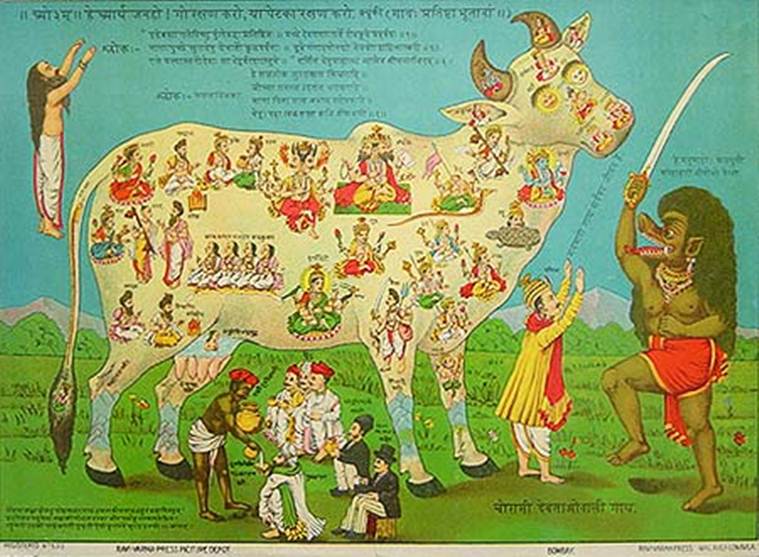 There is yet another example of the image of the cow, in every part of whose body groups of Hindu deities and holy persons were shown (Wikimedia Commons)The depiction of the cow as the mother (gau mata) who had to be protected, equating her status to that of the nation or ‘Bharat mata’ who was also in need of protection was visible across newspapers like gausevak and gau dharma Prakash. Pamphlets with pictures of the holy cow were also circulated, examples of which include a depiction of the cow in the act of being slaughtered by Muslim butchers. There is yet another example of the image of the cow, in every part of whose body groups of Hindu deities and holy persons were shown. Calendar art from the late nineteenth century onwards also depicted the cow and her need for protection, a significant contribution in this regard having been made by Raja Ravi Varma.
There is yet another example of the image of the cow, in every part of whose body groups of Hindu deities and holy persons were shown (Wikimedia Commons)The depiction of the cow as the mother (gau mata) who had to be protected, equating her status to that of the nation or ‘Bharat mata’ who was also in need of protection was visible across newspapers like gausevak and gau dharma Prakash. Pamphlets with pictures of the holy cow were also circulated, examples of which include a depiction of the cow in the act of being slaughtered by Muslim butchers. There is yet another example of the image of the cow, in every part of whose body groups of Hindu deities and holy persons were shown. Calendar art from the late nineteenth century onwards also depicted the cow and her need for protection, a significant contribution in this regard having been made by Raja Ravi Varma.
Post-independence
As nationalist leaders unfurled the tricolour in August 1947 and bid farewell to the colonisers, the question of the cow remained unresolved. In the shadow of the partition riots, the cow once again acquired the symbolism of Hindu identity that was in need of protection. Accordingly, when the Constitution was in the process of being framed, several leaders from the Hindu-conservative wing of the Congress asked for a ban on cow slaughter to be a part of the constitutional framework.
Most vociferous in this regard was a member from East Punjab, Pandit Thakur Dass Bhargava, who arguing from an economic point of view demanded that cow and cattle should be protected from slaughter. Others who supported him included Seth Govind Das, Shibban Lal Saxena, Ram Sahai and Raghu Vira. On the other hand, secularists like Nehru opposed the demand saying that legislation against cow slaughter had to be a matter of relevance solely to the respective states.
The demand for a ban on cow slaughter in the constitution was, however, vehemently opposed by the Muslim members who saw it as something that drew a cleavage between the ‘cow-eating Muslims’ and the Hindus who refrained from the same. Thereafter, the need for cow protection was made a part of the directive principles of state policy which are basically broad guidelines that the government should keep in mind while framing a policy, rather than constitutional rights.
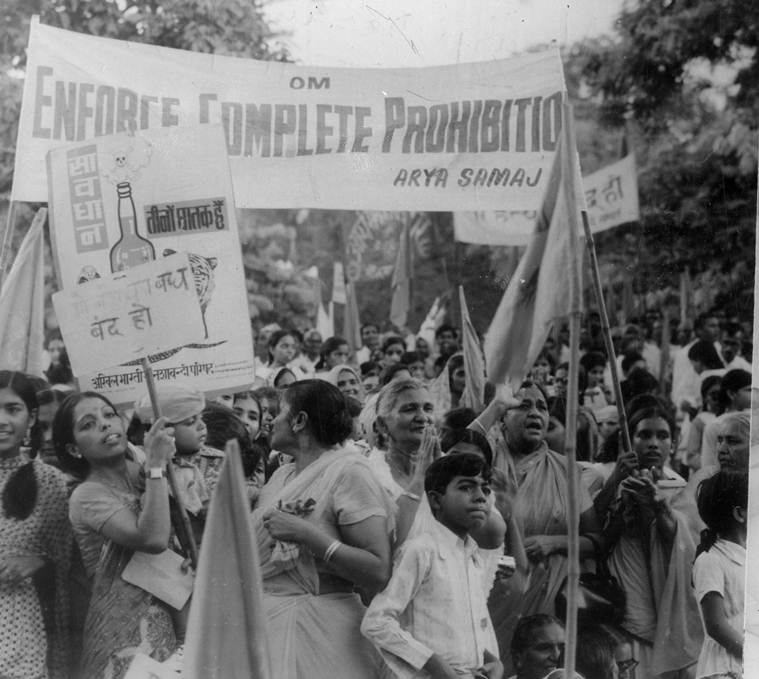 Huge rally on Anti Cow slaughter and prohibition in New Delhi on September 11, 1977. (Express archive photo)Even after the constitution was framed, however, the cow still remained a bone of contention. Cow protection had, by now become a major political tool for the RSS to denounce the authority of the Congress. In 1962, the chief minister of Madhya Pradesh, Kailash Nath Katju, and Nehru were criticised by Hindu nationalists as non-believers. The Jan Sangh, which worked closely with the RSS, employed slogans that said: “a vote for the Jan Sangh is a vote for the protection of the cow”.
Huge rally on Anti Cow slaughter and prohibition in New Delhi on September 11, 1977. (Express archive photo)Even after the constitution was framed, however, the cow still remained a bone of contention. Cow protection had, by now become a major political tool for the RSS to denounce the authority of the Congress. In 1962, the chief minister of Madhya Pradesh, Kailash Nath Katju, and Nehru were criticised by Hindu nationalists as non-believers. The Jan Sangh, which worked closely with the RSS, employed slogans that said: “a vote for the Jan Sangh is a vote for the protection of the cow”.
The cow protection movement of the 1960s was headed largely by the freedom fighter, Prabhudutt Brahmachari and RSS chief, M S Golwalkar. Under their leadership the mass movement calling for a ban on cow slaughter took place, resulting in the Parliament march. The cow protection movement of the 60s was in no way successful in making possible a countrywide ban on cow slaughter. However, its main impact could be felt in the electoral losses suffered by the Congress in the immediate aftermath.
The Jan Sangh used the 1966 parliament attack as a tool for criticising the Congress, particularly the fact that the government fired upon gaurakhshaks. In the 1967 Lok Sabha elections, the success of the Jan Sangh’s strategy could be felt in terms of the fact that it increased seats from 14 to 35. Thereafter, the party went on to frame cow protection laws in various states.
In the decades that followed the Jan Sangh collapsed and the BJP was born carrying with itself the legacy of its forebearer. During its years of inception and struggle forward, the BJP had successfully found other symbols to represent its Hindutva politics, namely the Uniform Civil Code and the Babri Masjid. Cow protection, though not prominent in its political discourse, remained breathing somewhere under the surface. The next time the issue raised its ugly head was during the 2014 Lok Sabha election campaign, when the BJP’s prime ministerial candidate Narendra Modi used the cow symbolism once again to criticise the Congress’ ‘pink revolution’.
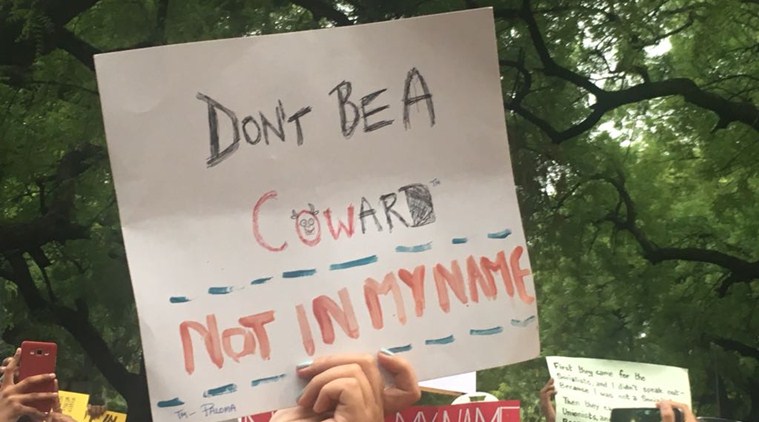 With the BJP steadily expanding its power base across India, and the number of lynching incidents growing higher, the age of the holy cow is surely set to stay.In April 2014, while campaigning for elections in Nawada, close to Patna Modi is noted to have criticised the Congress in the following words:
With the BJP steadily expanding its power base across India, and the number of lynching incidents growing higher, the age of the holy cow is surely set to stay.In April 2014, while campaigning for elections in Nawada, close to Patna Modi is noted to have criticised the Congress in the following words:
“Main hairaan hoon, ki yadvon, jo gau palan karta hain, jo gau ki seva karta hain woh kin logon ke saath baithe hain. Unke neta, kiske saath milkar ke rajneeti kar rahe hain? Woh log jo Hindustan mein pashuon ki katlen aam karne mein garv mehsoon karte hain. (I am surprised that the Yadavs who worship Sri Krishna, who keep cows at livestock and serve the cow, they are with politicians who are in support of those who slaughter animals with pride).”
In the months since BJP came to power, India has seen the largest number of lynching incidents related to cow protection, the victims almost all from the Muslim community. While PM Modi has recently taken a strong stance in denouncing those killing in the name of the cow, the BJP government has been accused of largely remaining silent on the matter and in fact holding up the cow as the ideal tool for garnering support from the majority. With the BJP steadily expanding its power base across India, and the number of lynching incidents growing higher, the age of the holy cow is surely set to stay.
Source-indianexpress.com



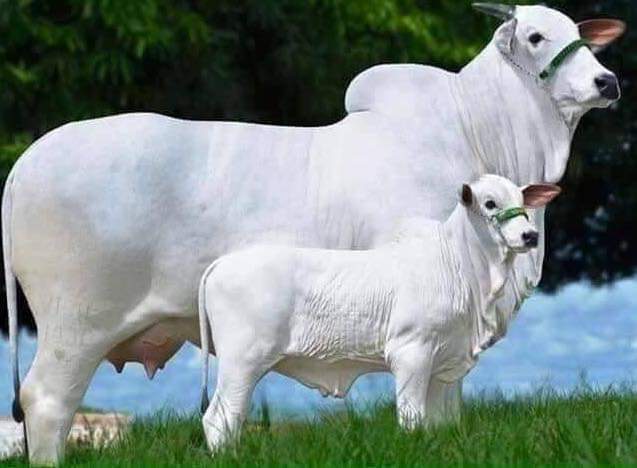

PASHUDHAN PRAHAREE NETWORK